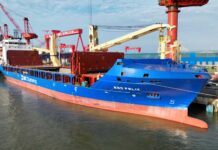Technology startups are focusing on reducing the empty container problem, a challenge that costs the container shipping industry about $20 billion per year.
At any given time, about one-third of the ocean containers in circulation are empty, and the average container spends nearly half its life idle, according to recent research.
Most major shipping lanes suffer from systemic trade imbalances — more loads flow from producing areas such as Southeast Asia into consuming regions like North America and Europe.
Historically there have been fewer loads going back from the West Coast of the United States to China, to reposition containers for the next round of eastbound shipments. Containers pile up in ports such as Hamburg, waiting to be moved back to Karachi, for example.
The majority of costs come from relocating empty containers thousands of miles back to an origin point.
“You will always need to move empty boxes into China from Europe, from Australia and the U.S. and there’s nothing really you can do about that,” Christian Roeloffs, one of the founders of Hamburg, Germany-based xChange, an empty container matching service, told Supply Chain Dive. “You cannot avoid the whole $20 billion cost, but you can avoid about 30% of it because this amount is caused by inefficiencies.”
Technology cuts through the knot
One way to cut empty container moves is to send them directly to the next load rather than ship them back to a hub.
The shipping industry is a relationship business, due to the army of personnel at carriers, freight forwarders, container traders and leasing companies tapping their personal network of contacts using phone, faxes and emails to secure loads for empty containers to cover at least a portion of the costs of relocation.
Technology is beginning to tackle the problem. Launched in 2017 as a spin-off of Boston Consulting Group, xChange created a neutral online market of empty containers that members can use to match loads and third-party equipment for one-way container moves.
Read more on Supply Chain Dive.





